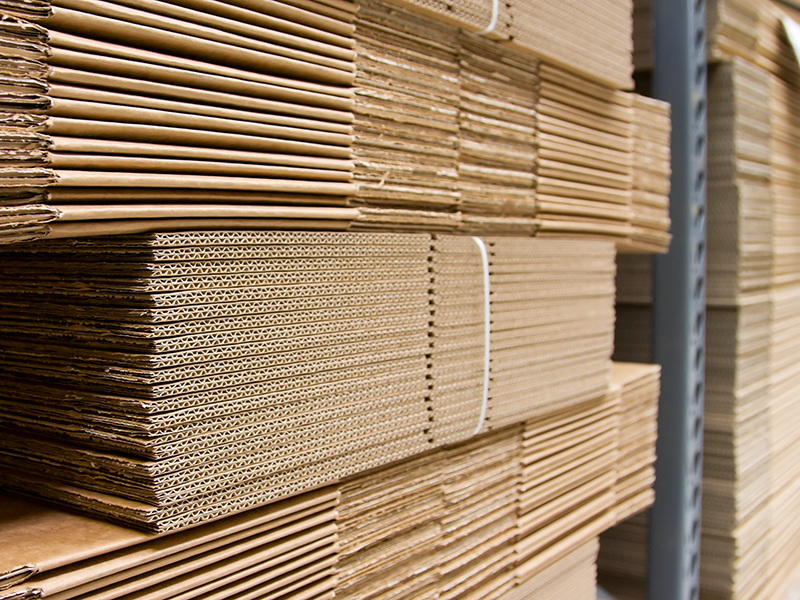Smithers anticipates major changes as $231.7 billion world corrugated packaging market returns to growth trajectory.
Global containerboard and corrugated board demand are facing a series of challenges and shifts in market dynamics across the next five years. These are expertly profiled, and quantified in the new market data report –
The Future of Global Corrugated Packaging to 2029 – from Smithers.
Published today, its in-depth analysis of capacity changes, pulp pricing, and end-user demands shows that in 2023, global containerboard production was 183.4 million metric tons, a -4% decline on 2022. These were converted into around 165 million tons of corrugated board, a decrease of more than -7% on 2022; with value reaching $224.4 billion. This reflects the end of the period of disruption in world supply that began in 2020 with Covid-19, which was characterized by disruption to global logistics impacting demand, price fluctuations leading to high inventories, and subsequent destocking.
Smithers is now able to forecast slight growth across 2024, with value increasing to $231.7 billion. This will be followed by a broader recovery in world demand at an average annual growth (AGR) of +2.5% by volume. This will see world corrugated volumes reach 190 million tons in 2029; value in the market will increase at a +3.7% AGR to $277.6 billion, at constant prices.
Many major containerboard suppliers have already invested in increased capacity, which will manifest in low operating rates across much of the Smithers forecast period. This is prompting moves that will redraw the commercial landscape for corrugated, with four of the six largest converters worldwide – Smurfit Kappa/WestRock (Sept 2023); DS Smith/International Paper (April 2024) – pursuing multi-billion-dollar mergers. Other firms are rationalizing operations; delaying further investment, taking extra downtime or even closing older mills and box plants.
Across 2024-2029, demand for corrugated packaging will vary across the 13 different end-use sectors Smithers profiles. The packaging and transportation of food products accounted for over 46% of the consumption of corrugated packaging material during 2023, a relatively constant level since 2016, but is expected to change slightly to 47% by 2029. This will include a new surge for corrugated grades for processed foods, although growth in fresh food & produce will be slower, and electrical goods are expected to have the most attractive volume growth of all products.
Multiple opportunities are arising for corrugated materials. Their recyclability means they are increasing being favored by brand and legislators, not just in transit, but consumer-facing primary packs. This is pushing converters towards finer, premium flute grades that can compete with folding cartons in sectors such as cosmetics, confectionery, and consumer electronics.
Legislation such as the EU’s recently approved Packaging and Packaging Waste Regulation (PPWR) are opening other opportunities. The PPWR will ban certain single-use plastic formats by 2030, including for smaller volume produce packs, and collation films for multipack beverages and food. Similar potential exists in food-service applications, is effective non-PFAS oil and grease resistance coatings can be integrated into existing corrugated lines.
Sales of retail-ready packaging (RRP) boxes are also forecast to increase rapidly due to the increased popularity of budget grocery chains in developed markets, and growth of retail infrastructure across Asia. In some instance converters will benefit from the installation of a new generation of high throughput inkjet presses for corrugated board, producing higher quality customized RRP.
The same equipment can be used to capitalize on the ongoing rise in e-commerce shippers. Twinned with design innovations these can produce visually appealing, consumer-oriented boxes that enhance branding and offer superior consumer returns.
The Future of Global Corrugated Packaging to 2029 from Smithers, combines expert market, commercial, and technical analysis to produce highly detailed market forecasts. Its comprehensive data set of over 350 tables and figures quantifies capacity, supply, and demand for both containerboard and converted corrugated board, by both value and volume. This is segmented by:
- Corrugated board grade – White-top kraftliner (WTKL); Unbleached kraftliner (UBKL); White-top testliner (WTTL); Unbleached testliner (UBTL); Semi-chemical fluting (SCF); Waste-based fluting (WBF).
- End-use application – Processed foods; Fresh food & produce; Beverages; Personal, health & household care; Chemicals; Paper products; Electrical goods; Glassware & ceramics; Wood & timber products; Textiles; Tobacco; Vehicle parts; Others.
- Geographic region & national market – North America, United States, Canada, Mexico; South & Central America, Brazil, Argentina, Chile, Other South & Central America; Western Europe, France, Germany, Italy, Spain, UK, Austria, Belgium, Denmark, Finland, Greece, Ireland, Netherlands, Norway, Portugal, Sweden, Switzerland, Other Western Europe; Eastern Europe, Poland, Russia, Bulgaria, Croatia, Czechia, Hungary, Romania, Serbia, Slovakia, Ukraine, Other Eastern Europe; Middle East, Türkiye, Other Middle East; Africa, South Africa, Egypt, Other Africa; Asia Pacific, China, India, Japan, Indonesia, Philippines, South Korea, Other Asia Pacific; Australasia, Australia, New Zealand, Other Australasia.
